A response to Joseph Albers, “Interaction of Colorâ€; “On Reds,†by Cennino d’Andrea Cennini; and The Primary Colors by Alexander Theroux
On the wall in my kitchen there’s a print of Barrett Newman’s famous painting “Be I,†the original of which hangs in the Detroit Institute of Arts. The painting consists of a sort of stop sign red broken down the middle by a thin white vertical line. I remember that in Kurt Vonnegut’s novel Breakfast of Champions, it was this painting (or one very much like it) that helped drive the main character crazy, its utter abstract simplicity a sort of “red cape†waving in front of this already cracked beast. Out in the living room there’s a print of one of my very favorite paintings, which also hangs in the DIA – Breughel’s “The Wedding Dance.†Here the reds are earthier, like berries or autumn leaves, and adorn the peasants as they dance, arms, legs, crotches, torsos, heads, a harmonious dance of red.
There is much to remember when one thinks of a color and how it has reverberated through one’s experience of art and life, and Theroux’s essay seemed like an invitation to do just that. In Letters on Cezanne, Rilke expresses the desire to “write a monograph on the color blue,†which he more or less proceeds to do in miniature form, and that is essentially what Theroux has done here with red. So the natural inclination is to write about red – free associating back through memory – and think not just about one’s experience of it, but one’s relationship to it and how that has grown and changed.
The first red I remember is the red brick façade of the house I grew up in. In a neighborhood of cookie cutter houses, two-story colonials that repeated every so often on our suburban block, it was this that made the house stand out. One could see it as soon as one turned off the main street onto ours, as it stood on the corner of several converging streets, and there was a warmth and comfort in that red compared to the (I always thought) drab greys and tans of our neighbors’ houses. This was especially true in winter, when my clearest memory is of its red showing through the furry whiteness of snow that covered everything else.
Another important red were the words of Christ in the King James version of the Bible that we read in the Christian School I was sent to beginning with the 3rd Grade. I still have the Bible. The red letters, which are really a very bright almost orange-red, naturally draw one’s eye in the midst of the rest of the black text, and imbue whatever Jesus had to say with an aura of importance. Most of Jesus’ speech is in the Gospels, of course, but there is some quite striking red-lettered text at the end of Revelations. “Surely I come quickly,†Jesus says in the penultimate verse in my Bible.
There was a bike that I just had to have, which I saw in the Schwinn store when I was a boy. It was a candy-apple red BMX bike, a Mongoose. I was transfixed by the color of this bike. I dreamt about it. It was perhaps the first material object that inspired such an obsession in me that I literally willed my parents into buying the thing itself, not a cheaper compromise item. The red of the bike was certainly what did it. One could really feel the red dripping off it. I think it might have been my father’s having owned a similarly red 1958 Chevy that caused him to sympathize enough with me to purchase it. I still remember its red mag wheels and red cushion pads on the handle-bar and neck. And of course where I grew up outside of Detroit, we played hockey and rooted for the Detroit Red Wings, whose uniform color is a beautiful cardinal red on white when they play at home, white on red when they’re on the road. Everybody wanted to be on the Red Wings in whatever league we were in, and those red and white colors were a constant presence and reminder of hometown fervor and team loyalty.
Then there is red in film. Speilberg of course famously used red as the only color in his otherwise black and white Schindler’s List, when a Nazi officer sees the blood of a child running on the street during Kristalnacht. This was effective but it seemed a bit heavy-handed to me. Far more shocking to me personally is David Lynch’s use of red, especially in Blue Velvet, which I saw by chance on cable TV when I was a teenager, maybe a year or so after it came out. There is the red of Dorothy’s lips, the “Blue Lady,†played by Isabella Rossellini. It is a deep crimson rose, an emergency sort of red, almost seeming to shout for help in the midst of her anguished face. We first see the red in her dark apartment when she catches Jeffrey (Kyle Maclachlan) spying on her, and as I recall, she stabs him with a kitchen knife, thus drawing his blood to create an equivalent with her red lips. In fact characters throughout the film draw each other’s blood; Jeffrey is punched by Dean Stockwell’s character; Frank (Dennis Hopper) brutalizes him; and he himself punches Dorothy in the mouth while they’re making love. In Wild at Heart, perhaps the single most frightening moment in the film is when Lula (Laura Dern)’s crazed mother (Diane Ladd) begins applying lipstick to her mouth, in her worry and anger missing her lips and rubbing it on her face. Cutaway. Then her face fills up the screen, covered in a shocking, angry red. The effect of these films was to draw me into the complicated sexuality of adolescence, with all its confusion and impatience, not to mention the barely contained violence that lied beneath the smooth suburban surface of things.
Perhaps one’s relationship to red grows more refined, but less intense, as one grows older. I can’t think of any reds that affected me so strongly in adult life. I miss the reds of the natural world in my Michigan childhood – the deep rich reds of autumn leaves, the brownish reds of apple cider and donuts at the Cider Mill – they come to be replaced by the reds of art and architecture. As I think of those leaves, for example, I am reminded of the unique clayish red of the Golden Gate Bridge, which is said to be a secret formula not used anywhere else, and which is constantly repainted at great expense to keep from dulling. The hills of Marin beyond the Bridge, if one is looking from the San Francisco side, also have a striking reddish quality that underscores the rich fertility and prosperity of the area, hinting at wine and money. One also misses the ocean sunsets, visible from the roof of the last apartment building I lived in, a fifteen minute walk to the actual beach, which were a gift that never grew less moving each time one saw it. At the beach there would always be a gathering of couples and solitary figures, dogs and children, everything tinted a very holy reddish-orange as the sun quickly sank beneath the horizon, the outlines of bodies becoming less distinct and seeming to join everyone together for a moment in a feeling of peace.


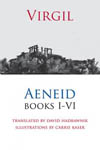
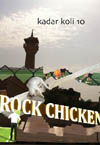
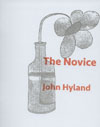


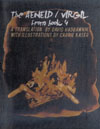
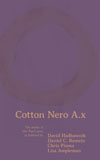
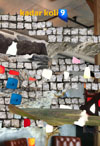
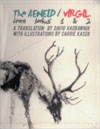
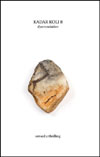
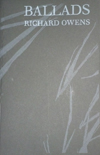
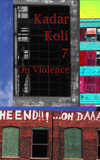

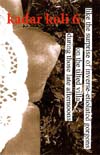
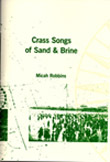

I really like this post. I can’t say I’ve really thought about this before, how certain colors can almost create a thematic thread throughout one’s life. I tried to think about my life in this context, but couldn’t come up with anything. Maybe I’m not color conscious (like Stephen Colbert, who doesn’t see color), although lately white has been the foundational color of my life since it seems to snow constantly here this winter.
Seems like you kids are drowning in white these days!
Well, you should check out Bachelard when you have a chance; we read quite a bit of him in Kathleen’s Form n Theory class, and it was pretty interesting stuff.